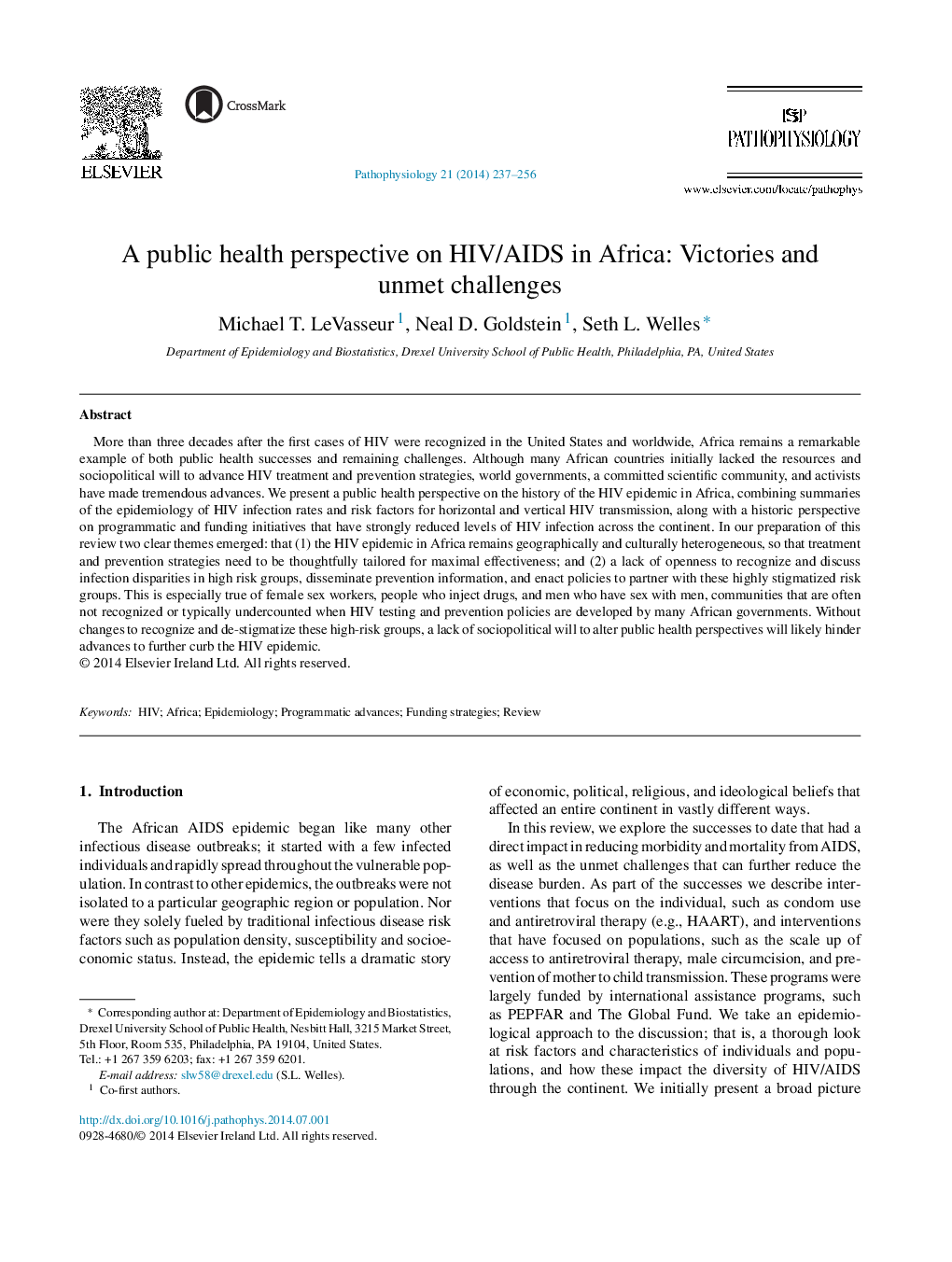| کد مقاله | کد نشریه | سال انتشار | مقاله انگلیسی | نسخه تمام متن |
|---|---|---|---|---|
| 4137028 | 1272000 | 2014 | 20 صفحه PDF | دانلود رایگان |
More than three decades after the first cases of HIV were recognized in the United States and worldwide, Africa remains a remarkable example of both public health successes and remaining challenges. Although many African countries initially lacked the resources and sociopolitical will to advance HIV treatment and prevention strategies, world governments, a committed scientific community, and activists have made tremendous advances. We present a public health perspective on the history of the HIV epidemic in Africa, combining summaries of the epidemiology of HIV infection rates and risk factors for horizontal and vertical HIV transmission, along with a historic perspective on programmatic and funding initiatives that have strongly reduced levels of HIV infection across the continent. In our preparation of this review two clear themes emerged: that (1) the HIV epidemic in Africa remains geographically and culturally heterogeneous, so that treatment and prevention strategies need to be thoughtfully tailored for maximal effectiveness; and (2) a lack of openness to recognize and discuss infection disparities in high risk groups, disseminate prevention information, and enact policies to partner with these highly stigmatized risk groups. This is especially true of female sex workers, people who inject drugs, and men who have sex with men, communities that are often not recognized or typically undercounted when HIV testing and prevention policies are developed by many African governments. Without changes to recognize and de-stigmatize these high-risk groups, a lack of sociopolitical will to alter public health perspectives will likely hinder advances to further curb the HIV epidemic.
Journal: Pathophysiology - Volume 21, Issue 3, September 2014, Pages 237–256
